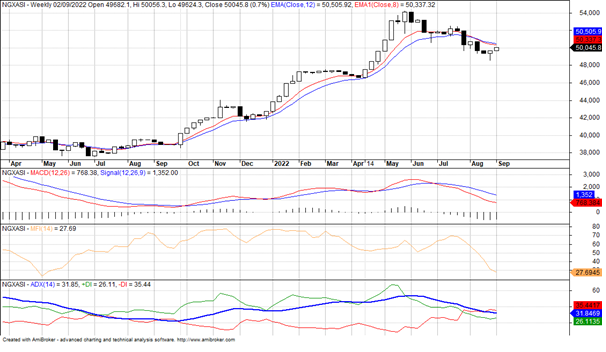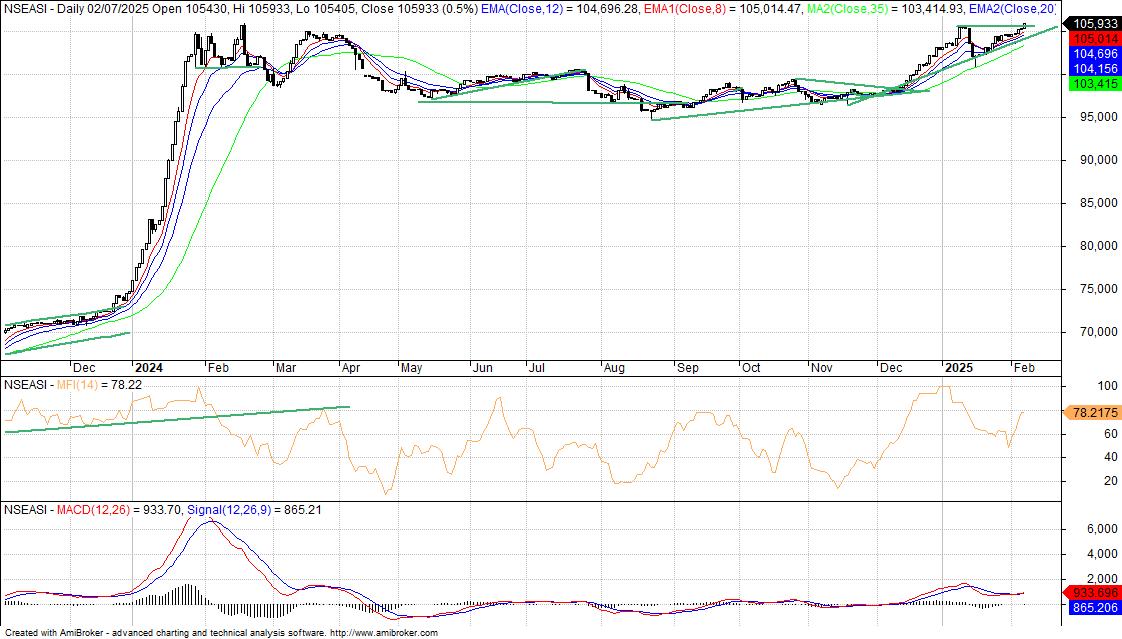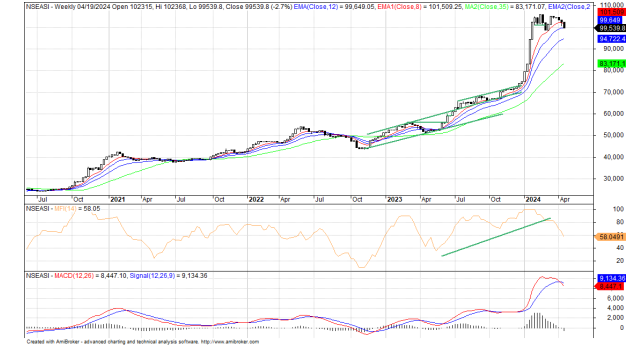NGX Reverses On Bullish Momentum, Extending Markup Phase Ahead Q2 Earnings Season
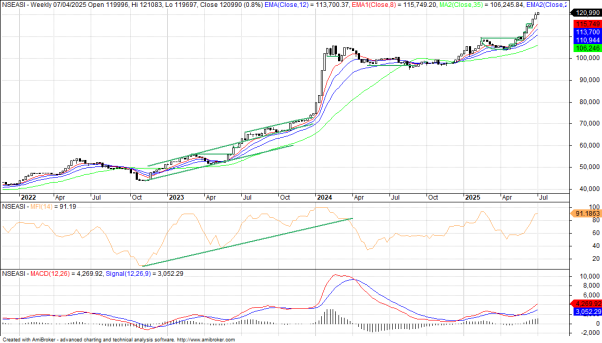
The first trading week of the new month and Q3 on Nigerian Exchange started on mixed trend, following bearish opening, as the benchmark NGX All-Share Index dip by 0.01% on Monday, with the downtrend extending into Tuesday. However, the bullish sentiment returned on Wednesday, driving a 0.50% gain in the Index. This positive momentum was sustained through Friday, adding a further 0.01% gain to close the week higher and thereby extending the bullish run for the sixth consecutive weeks on a very high trade volume and positive market sentiment.
NGXASI Weekly Chart
Consequently, the year-to-date return settled at 17.55%. As a result, the market capitalisation settled at N76.339tr and All-Share Index stood at 120,989.66 points. Year-to-date, the All- Share Index has gained 17.55%; the NGX-30 is up by 16.68%, the Banking Index is up 19.50%, the Pension Index by 29.67%, the Insurance Index increased by 10.62%, the Consumer Goods Index increase by 57.19%. However, the Oil and Gas Index recorded a negative return of 9.17%. In terms of market breadth, 78 stocks advanced, while 20 suffered decline.
Meyer Plc Weekly Chart
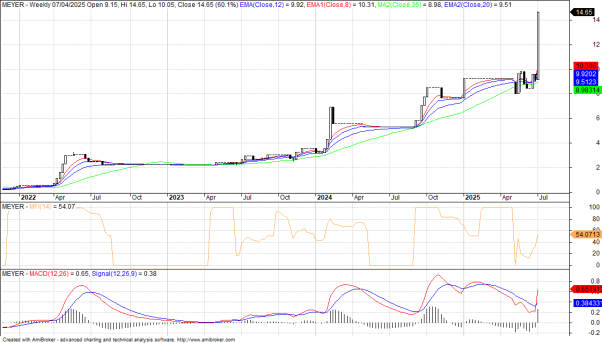
Leading the top gainers chart was Meyer Plc a fast-growing, dividend- paying paint manufacturer in Nigeria opened at N9.15 per share and closed at N14.65 each. RT Briscoe rose from N2.42 to N3.65; FTN Cocoa moved from N3.33 to N4.67; International Energy Insurance increased from N1.75 to N2.37; and UPDC advanced from N3.52 to N4.74 each.
PZ Weekly Chart
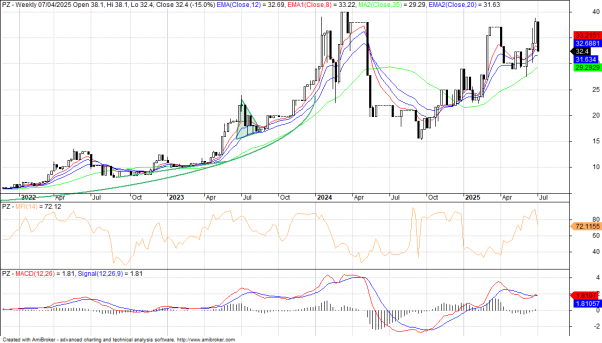
On the decliners chart was PZ Cussons which manufactures and distributes personal care, home care, and electrical appliances, dropped from N38.10 to N32.40 each. Julius Berger declined from N124.40 to N112.00 per share. SCOA fell from N5.39 to N4.86 per share. VFD Group slid from N14.80 to N14.00, while Haldane McCall lost ground from N4.20 to N4.00 each.
Technical Outlook:
The reversal at the midweek and strong breadth suggests a short-term bullish bias, while sustained upward momentum above 121,000 basis points may target the 122,500–123,000 resistance zone. The NGX support remains around 120,000 basis points, and any breach below that may reintroduce selling pressure and profit booking. Consequently, investors are advised to monitor volume and sector rotation, especially in Consumer Goods and Banking for momentum opportunities.
Trending in the Economy: The IMF projects Nigeria’s real GDP to grow by 3.4% in 2025, supported by increased oil production, domestic refining, and a strong service sector. While it commended recent tax reforms and bank recapitalization, it noted that growth remains too low to reduce poverty meaningfully. The IMF called for faster cash transfers to the poor, a neutral fiscal stance, and action on insecurity, infrastructure gaps, and limited private credit. It also emphasized the need for better data, financial inclusion, and stronger regulation of fintech and crypto sectors.
The Nigeria Customs Service, Tin Can Island Port Command, generated ₦747.07bn between January and June 2025, a 29.85% increase from ₦575.36bn in the same period of 2024, achieving 98.03% of its target. Comptroller Frank Onyeka attributed the performance to the Bodogwu clearance system, regular stakeholder training, and improved enforcement. The command also recorded major security wins, including drug seizures worth over ₦8bn and the interception of arms and ammunition.
Global Market and Oil: Stocks slipped on Friday as investors turned their attention to U.S. President Donald Trump’s July 9 deadline for new trade deals, following congressional approval of his $3.4 trillion tax and spending bill. The move, which temporarily averts a government default, added to debt concerns and dampened global sentiment.
In Europe, the STOXX 600 index fell 0.5% to 513.42, dragged by weakness in banking, mining, and retail shares. In the U.S., S&P 500 futures dipped 0.6% to 5,536.25 after the index closed at a record high of 5,634.19 on Thursday. The Nasdaq Composite rose 0.9% to 18,352.76 in the previous session, while the Dow Jones Industrial Average advanced 0.6% to 39,308.00. U.S. markets were closed Friday for the Independence Day holiday.
Asian markets were mixed amid growing caution over trade developments. Japan’s Nikkei 225 declined 0.3% to 39,508.29 and South Korea’s KOSPI dropped 0.6% to 2,738.02. In contrast, China’s Shanghai Composite edged up 0.2% to 2,986.62, and Vietnam’s VN-Index gained 0.5% to close at 1,303.25. Hong Kong’s Hang Seng slipped 0.2% to 17,882.42.
The U.S. dollar index eased 0.1% to 96.94 after a 0.4% bounce the day before. The euro strengthened 0.2% to $1.1778, while sterling was steady at $1.3662. Although the U.S. Treasury market was closed Friday, Thursday’s trading saw the 10-year yield rise 4.7 basis points to 4.34%, and the 2-year yield climb 9.3 basis points to 3.882%.
Gold rose 0.4% to $3,336 per ounce, supported by safe-haven demand amid fiscal concerns and trade jitters. Brent crude fell 57 cents to $68.23 a barrel, while U.S. West Texas Intermediate slipped 66 cents to $66.34, following Iran’s renewed commitment to nuclear non-proliferation.
Sectorial Indexes Charts for the Week
NGX Banking Index Weekly Chart
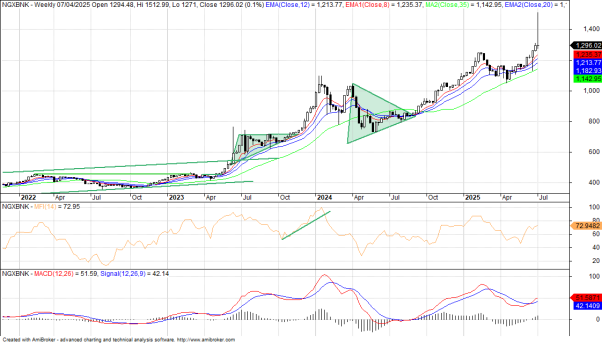
NGX Industrial Goods Index Weekly Chart
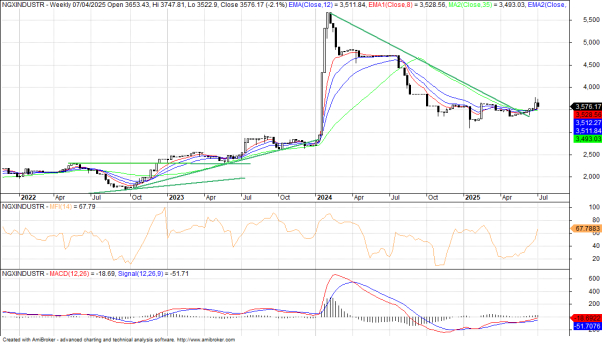
NGX Consumer Goods Index Weekly Chart
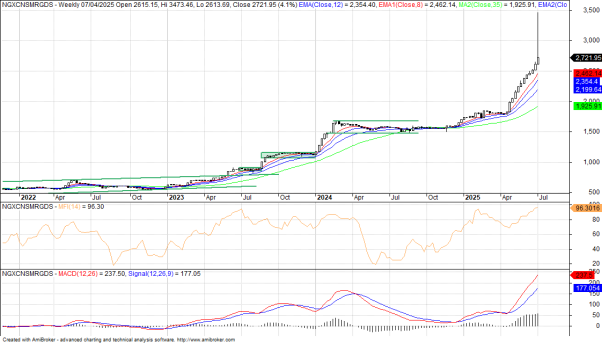
NGX Insurance Index Weekly Chart
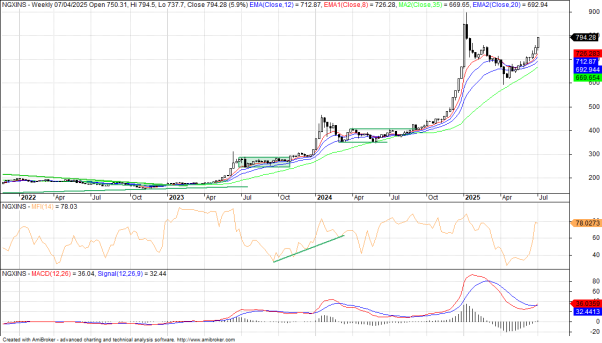
NGX Oil & Gas Index Weekly Chart
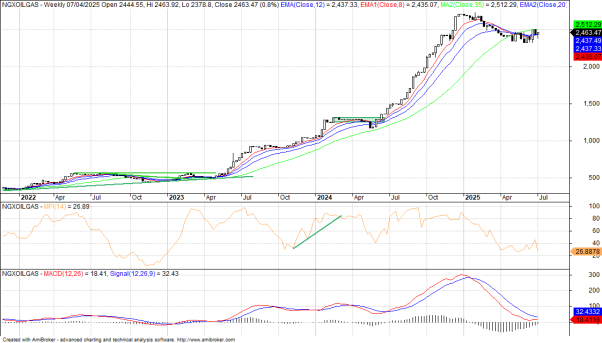
NGX 30 Index Weekly Chart
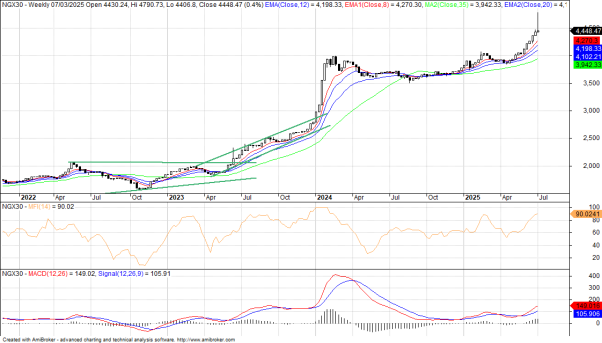
Caverton Weekly Chart
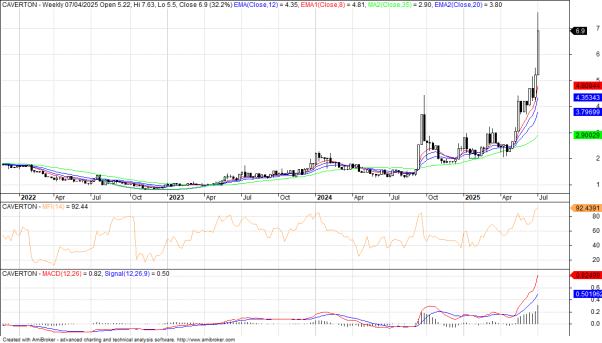
UPDC Weekly





